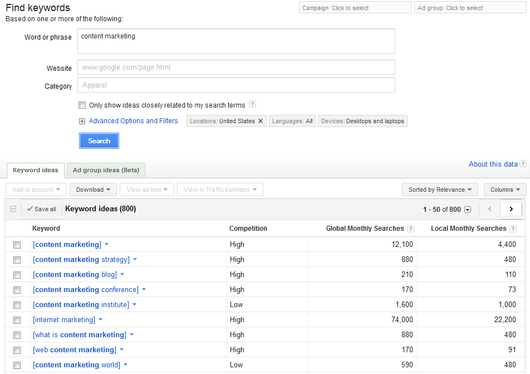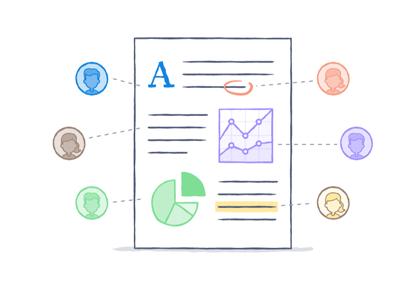Boosting website traffic is essential for local businesses: all the visitors to your website are potential customers.
However, actually driving traffic and increasing visitors to your site is a challenge - especially for businesses with new websites.
Many businesses are hesitant to invest in advanced traffic strategies until they see a correlation between in-store sales and website visitors.
However, without website traffic, a business' local online marketing strategy will suffer (a perfect example of the chicken and the egg cycle caused by inaction). To get out of the chicken/egg rut, you should learn and master a few local business website traffic strategies and start using them in your marketing mix.
You can drive local business website traffic by learning how to use the right tools and mastering how traffic methods work.
There are three main ways to get more website traffic:
- Paid media: PPC and display ads, ad words, sponsored posts, etc.
- Owned media: websites, blogs and social media pages
- Earned media: free publicity, word of mouth, social media mentions/shares/reposts, positive reviews and organic SEO
Read on for a website traffic overview and then decide which method works best for your local business -- without spending a large portion of your marketing budget.
1. Paid media
Covering the ins and outs of paid media is beyond the scope of this article (there are entire courses dedicated to this topic), but with a few basic guidelines you will be able to decide if it is a good marketing strategy for your local business.
a. Pay-per-click advertising (PPC)
PPC advertising (or banner ads) are ads you place on targeted websites to drive traffic back to yours. PPC ads are effective in driving traffic quickly, but if you don't carefully manage them, they could end up costing you a lot of money (and have nothing to show for it).
There are many reasons why businesses choose to use PPC advertising, including:
- It is a way to drive traffic to your website while you up your SEO game
- For companies that don't have great rankings, it can help make up for lost time
- They have the ability to geo-target ads by city, state or zip code
If you are interested in using PPC advertising as a part of your strategy (and aren't familiar with things such as programmatic ad buying and using data science to buy ads) it is best to find an expert that can guide you.
b. Ad words
Ad words is when you bid auction-style on a particular keyword in a search engine (such as Google or Bing). The higher the bid, the better placement your ad will receive on the search engine results landing page. The marketplace determines price of keywords: high-demand keywords are very expensive (i.e.: "buy car insurance online" or "cheapest homeowner loans") while keywords that aren't as popular are relatively cheap. The actual cost of keywords can fluctuate from a few pennies for obscure, long-tail keywords to hundreds of dollars for the most competitive words.
If you choose to use ad words, keep in mind that you will be competing against your large national counterparts, who most-likely will have a higher bidding price than you. The good news for local businesses is that bids are affected by how well a bidder's website ranks and the relevance of the landing page, often giving you an edge over those with unlimited budgets.
c. Social paid media
Facebook, Twitter and LinkedIn (and soon Pinterest) all offer businesses opportunity to pay for media that will reach a targeted audience. Paid media on social are usually called "sponsored/promoted posts/tweets" and blend seamlessly into the network.
There are many ways to have an effective social media strategy and not pay for posts. Check out this free resource for strategies that will drive traffic to your website, but not cost you a fortune.
2. Owned media
Owned media includes assets that could be considered an "extension" of your business and that are fully controlled by you. Examples include your website, blogs and social media pages.
Regularly updating and posting to your owned media assets is crucial to boosting their ranking on search engines (and thus driving traffic to your website).
- Add more content: Website content includes blog and social media posts, how-to guides, ebooks, etc. And one new blog post won't help -- if you can't regularly commit to posting, it is best to hire someone to do it for you. According to researchers, it takes about 20 quality blog posts to start seeing traffic growth.
- Write valuable content: The quality of published content is more important than quantity. The headlines of your posts should draw readers in and your content should highlight your areas of expertise.
- Include videos and photos: Not only do videos and photos receive 5x the engagement vs. posts without, they are a great way for your business to stand out from the crowd and personalize your website. Some ideas for videos include employee interviews, product descriptions and customer testimonials. Create a YouTube channel and start posting videos to drive additional traffic.
3. Earned media
Earned media is free promotion your business receives. Examples include unpaid publicity, word of mouth, mentions/shares/reports on social media and reviews on sites, such as Yelp. While you can't directly control your earned media, you can encourage it by keeping your customers happy (who will, in turn, provide you with positive reviews, recommend you to friends, share your social media posts, etc.) and building your owned media platforms correctly.
a. Organic SEO
Increasing organic traffic to your website is something any business can accomplish -- at a reasonable price (usually, your time). However, unlike PPC advertising which is immediate, building your organic SEO takes time. A good place to start is to ensure your website, blog and social media pages all incorporate the keywords you would like to rank for.
Local businesses have a leg-up in the organic SEO game, due to the rise of mobile, simply because of how search engines classify their business. For example, Google gives priority to local businesses when a searcher is on a mobile device because they assume they are looking for a business nearby to visit. Make sure your website includes a phone number (with a local area code) and local address to rise even higher in the SEO rankings.
b. Review sites
Mention the word "Yelp" in a room full of local businesses and you'll get strong opinions (both positive and negative). Why? Because review sites, and the reviews left on them, have a powerful impact on local businesses.
If you aren't familiar with Yelp, check out this free guide on getting set up.
Search engine algorithms are heavily influenced by review sites -- in some cases, your Yelp page will appear higher than your website.
c. Social media
In the past few years, social media exploded and is now an essential part of any online marketing strategy. When you update your website (with a deal, new product, etc.), you should also be sharing that information on your social media pages so your audience knows where to go for more information (your website).
d. Directories
Directory optimization is a critical part of any online marketing strategy and every local business should submit their information to the major directories:
If you are curious about how your local business appears on major directories, run a free report today.
While every directory has a different set of guidelines for listings, your submissions should all be consistent and identical in order to up your organic SEO.
Most local businesses use a combination of paid, owned and earned media to drive traffic to their website (and therefore, in-store). We would love to hear the mix that works best for your business and how you made the decisions -- please share your stories in the comments section below.
If you liked this, you should sign up for the LinkedIn Marketing & Advertising Tips from Franchise-Info newsletter.
Or, for more information on the Franchise-Info Business Directory, call Joe at 1-443-502-2636 or email Joe direct [email protected]
The post Strategies to Boost Local Business Website Traffic appeared first on LocalVox.




